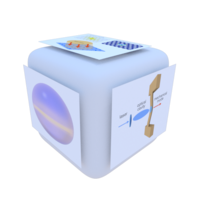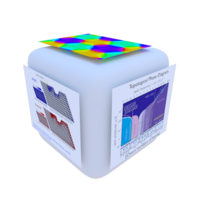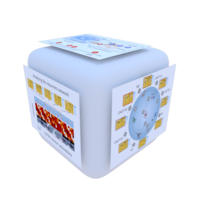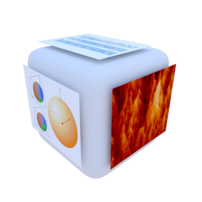Research
Research topics Marquardt group: at the interface of nanophysics and quantum optics
In our research, we apply tools from condensed matter theory and from quantum optics to a range of questions at the interface of nanophysics and quantum optics, addressing both quantum and classical dynamics. In our approach, we often try to identify the salient features of experimentally relevant situations and condense them into minimalist models which can then be attacked with all the state-of-the-art theoretical tools. At the same time, we also care about the direct contact with experiments, down to designing the classical electromagnetic and acoustic properties of specific structures. In the past few years, our main focus has been developing the theoretical underpinnings of a new research area, that of cavity optomechanics. Moreover, we develop new theoretical tools, like applications of neural networks (deep learning).

Cavity Optomechanics
This field deals with the fundamental interaction between light and mechanical vibrations. We have developed many of the theoretical underpinnings of this field and are now analyzing future optomechanical devices. Possible applications include novel tools for quantum communication, very sensitive detectors, and experiments on the foundations of quantum physics.

Topological Transport of Phonons and Photons
Waves can display "topological" phenomena when they propagate in suitably designed media. The most prototypical effect is the creation of chiral edge states, first known from the quantum Hall effect for electrons in a magnetic field. This helps to make transport robust against disorder. We have pioneered the design of phonon topological transport (see our 2015 paper), exploiting the tools of optomechanics.

Machine Learning for Physics
Machine learning with artificial neural networks is revolutionizing many areas of science and engineering. Powerful "deep" networks are extremely successful in tasks such as image recognition. An increasing number of research groups around the world have now begun to explore the application of these ideas to physics. We have pioneered the application of neural-network based "reinforcement learning" to quantum physics, where a computer develops from scratch useful sequences of quantum operations. Read our paper on this topic. We are currently pushing forward into many different applications.

More: Circuit Quantum Electrodynamics, Qubits, Optomagnonics, Nonequilibrium Quantum Many-Body Dynamics, Nonlinear Classical Field Theories
Our group continues to contribute to a variety of topics: circuit quantum electrodynamics in superconducting chips, qubit dynamics and decoherence (including machine learning for quantum error correction), cavity optomagnonics (coupling magnons to the light field; in collaboration with the junior research group of Silvia Viola-Kusminskiy), synchronization in lattices of coupled oscillators and other effects in nonlinear field theories, nonequilibrium quantum many-body dynamics in cold atoms and other systems.





